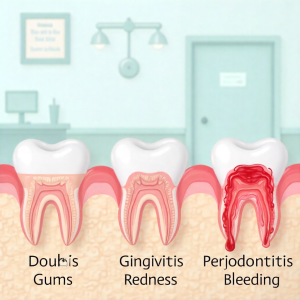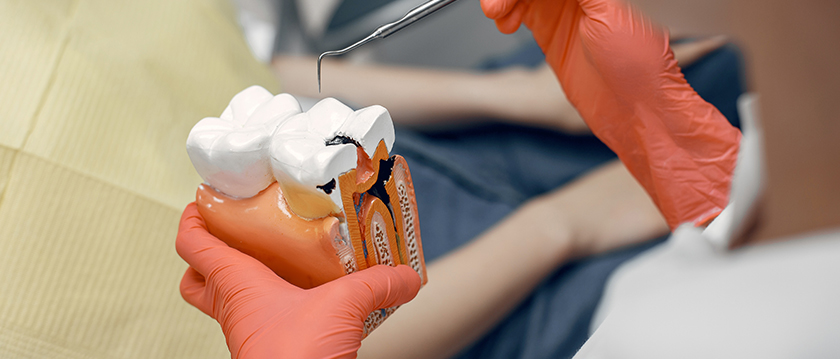What is Gum Disease?
Gum disease is an infection and inflammation of the gums and the surrounding tissues that support your teeth. It is primarily caused by the accumulation of plaque, a sticky film of bacteria that forms on your teeth after eating and drinking. If plaque is not removed regularly through proper oral hygiene, it hardens into tartar, which can only be removed professionally.
Gum disease, medically known as periodontal disease, is one of the most common oral health problems affecting adults worldwide. Despite its prevalence, many people remain unaware of the warning signs or underestimate the severity of the condition until significant damage has occurred. If left untreated, gum disease can lead to tooth loss and has even been linked to other systemic health issues such as heart disease and diabetes.
Gum disease, medically known as periodontal disease, is one of the most common oral health problems affecting adults worldwide. Despite its prevalence, many people remain unaware of the warning signs or underestimate the severity of the condition until significant damage has occurred. If left untreated, gum disease can lead to tooth loss and has even been linked to other systemic health issues such as heart disease and diabetes.
Why Is Gum Disease a Serious Concern?
Gum disease doesn’t just threaten your oral health; it can have serious effects on your overall well-being.

Research has shown that periodontitis is linked to several systemic conditions, including:
- Heart Disease: Chronic inflammation from gum disease may increase the risk of heart attacks and strokes.
- Diabetes: Gum disease can make it harder to control blood sugar levels, worsening diabetes.
- Respiratory Issues: Bacteria from infected gums can be inhaled, potentially worsening respiratory conditions.
- Pregnancy Complications: Gum disease is associated with preterm birth and low birth weight.
Recognizing the Early Signs of Gum Disease

Early detection is the key to successful treatment. Here are some common symptoms that may indicate you have gum disease:
- Red, Swollen, or Tender Gums
- Bleeding Gums
- Persistent Bad Breath or Bad taste
- Gum Recession
- Loose or Shifting Teeth
- Pain While Chewing
Preventing gum disease

- Brush your teeth with fluoride toothpaste at least twice a day – spit after brushing, do not rinse
- Clean in between your teeth every day using floss or interdental brushes.
- Replace your toothbrush every 1 to 3 months.
- See a dentist and dental hygienist for regular check-ups, especially if you’re pregnant or have type 2 diabetes.
Treatment Options for Gum Disease
Treatment varies depending on the stage and severity of your gum disease.
Professional Cleaning (Scaling and Polishing)
For mild gingivitis, a thorough professional dental cleaning removes plaque and tartar from above and below the gumline. Improved home care following the cleaning can usually reverse gingivitis.
Scaling and Root Planing (Deep Cleaning)
If periodontitis is diagnosed, this non-surgical gum specialist treatment procedure cleans bacteria and tartar from below the gumline and smooths the tooth roots to promote healing. Local anesthesia is used for comfort.
Antibiotic Therapy
In some cases, topical or oral antibiotics may be prescribed to reduce bacterial infection.
Surgical Treatments
Advanced periodontitis may necessitate surgical interventions, including:
Advanced periodontitis may necessitate surgical interventions, including:
- Flap Surgery: Lifting the gums to clean deep pockets and reattach healthy tissue.
- Bone Grafts: Using natural or synthetic material to regenerate lost bone, which may also support dental implants.
- Soft Tissue Grafts: To restore receded gums and protect exposed tooth roots, offered under cosmetic dentistry.
- Guided Tissue Regeneration: Encourages regrowth of bone and gum tissue, provided in advanced periodontics.


